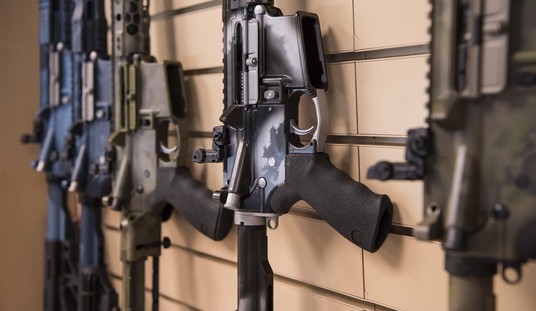Cody Wilson has mastered the art of terrifying anti-gun politicians, creating products that prey on their most irrational fears.
He exploited their fears of technological advances and plastic guns when he created the “Liberator,” a single-shot, 3D-printed pistol.
He’s now going after the easily spooked—and comically ignorant—California State Senator Kevin de Leon, whose fact-free and hysteric blithering over “ghost guns” has been roundly mocked by the firearms community.
de Leon’s SB 808 to outlaw “ghost guns” passed the similarly clueless and fearful California legislature, before being vetoed by California Governor Jerry Brown, who noted that the paranoia-driven bill “would not advance public safety.”
If de Leon was stung by Brown’s rejection, then Wilson’s new $1,200 “Ghost Gunner” is likely to leave him fuming.
Cody Wilson, the man who introduced the first 3D-printed gun 18 months ago, has a new machine that will make building a homemade AR-15 rifle easier and cheaper for gun enthusiasts.
Wilson’s non-profit group is now accepting pre-orders for the $1,200 Ghost Gunner, a small, computer-numerically-controlled (CNC) milling machine. The Ghost Gunner can carve the lower receiver of the AR-15 from a piece of aluminum based on a digital model uploaded to a computer that connects to the machine. A key component of a rifle, the lower receiver is the body of the gun and connects to all the other parts, including the stock, barrel and magazine. Under U.S. firearms laws, the lower receiver is the one gun component that is considered a firearm and, thus, also the most regulated part.
The Ghost Gunner requires the user to furnish his own pre-made lower receiver, a piece of metal already shaped like a lower receiver but lacks the holes and cavities to make it into the proper body of a working gun. The pre-made receivers are sometimes called “80 percent lowers” and can cost the user somewhere between $80 to $100 apiece. With an unfinished lower — which Wilson says is not considered a firearm — an upper receiver, a parts kit and a magazine, all of which can be purchased anonymously online, users can build a gun in an hour.
“We’re making this easier by an order of magnitude,” says Wilson.
…
The milling machine’s name is clearly a jab at California State Senator Kevin de Leon, whose proposal to outlaw the creation of homemade guns with no serial numbers, which he calls “ghost guns,” was vetoed by anti-gun Governor Jerry Brown. In a press conference earlier this year, de Leon said making gun-making tools more available endangers the general public as it makes it easier for “dangerous individuals like criminals and the mentally unstable” to obtain weapons for criminal purposes.
“The threat is real,” he says (video). “We’re beginning to see an emerging industry and market for ghost guns. No one knows they exist until after a crime has been committed.”
This is Wilson’s “Ghost Gunner.”
The information technology media seems to think that the “Ghost Gunner”—which costs roughly the same as two factory-finished AR-15s at today’s prices—is something new and magical. To be fair, it probably is new for a bunch of technology geeks who know next to nothing about firearms outside of what they’ve seen playing Call of Duty.
It’s almost much ado about nothing for those who have been building AR-15s lowers and parts kit AKMs using far less expensive home shop tools for decades.
Using nothing more than a $70-100 drill press or even a hand drill with jigs, people have been completing perfectly functional AR-15 lower receivers since at least the 1990s.
Likewise, you can buy all the equipment necessary to build a small factory churning out AKMs (the correct name for AK-series rifles that the media continues to call AK-47s, even though the original Ak-47 series hasn’t been made since 1960) from parts kits and receiver flats for less than $700.
Wilson’s “Ghost Gunner” CNC machine is far more expensive than either of these options. All you’re really getting for that $1,200 is a bit of machinery that clearly announces your intentions to any government intent seriously intent on identifying the makers of personal firearms, a comforting level of “plug and play” capability, and a reduced margin of error in unskilled hands.
Is the “Ghost Gunner” worth it?
It depends on what your goals are.
If your goal is to make personal firearms without “Big Brother” knowing what you are doing, then no, it probably isn’t worth the investment when less expensive tools with a much more versatility can be used to achieve similar results.
If your goal is to terrify and infuriate the agents of an ever-more-intrusive government, however, the Ghost Gunner serves its purpose well, and that is precisely the role of everything produced by Defense Distributed, which exists for the explicit purpose of ticking off all the right people.






Join the conversation as a VIP Member